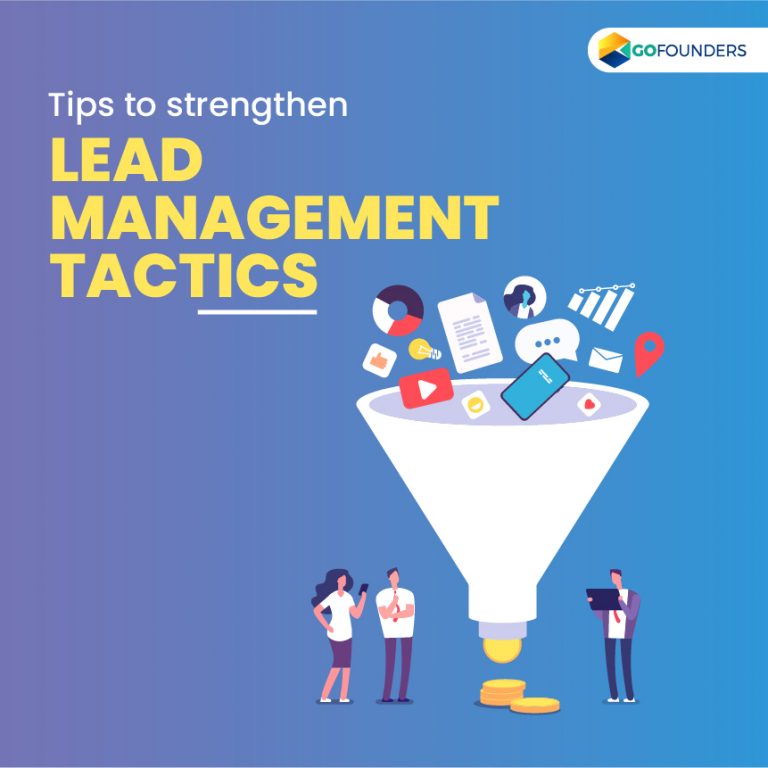
Lead generation is one of the most pertinent aspects of a business entity. It drives sales and helps businesses grow and expand. However, in today’s highly competitive market world, lead generation is not sufficient. Businesses must need a robust lead management system to drive conversions and achieve real growth.
This article outlines the tips to strengthen lead management tactics and ways to have a robust lead management system in your organization.
What is a Lead Management System?
The lead management system is a process that guides a qualified lead to become a customer. It involves following five steps that help you maximize your lead management practices.
1) Lead generation
It involves stimulating curiosity and interest in prospects towards your brand’s product and service. Following are the ways to fill your lead pipeline:
- Have a strong landing page
Your website is a primary source of generating leads. Go beyond contact, experience and service page and include various options that will fetch your audience’s attention.
You can publish relevant blogs to attract significant website traffic.
Also, consider offering a free e-book or other free resources. Thereby collect the contact information of your leads.
- Develop an appealing ‘About’ page
The ‘About’ page is one of the most valuable pages on your website. It helps you build trust in your visitors towards your brand. Develop it in such a way that the audience should feel compelled to know more about your company.
- Realize the power of SEO
SEO is inevitable in maximizing your marketing efforts. Study it thoroughly to assess and rank your content. Also, make sure you are using the right keywords, backlinks, guest posts, etc.
- Make your website mobile-friendly
The majority of the audience will access your website through their smartphones. Thus, make sure that your website is fast and responsive on mobile.
- Include live chat
If a visitor is making a purchase on your website and in the middle of it, he wants an answer to a particular query, and then it is imperative to have an option of live chat to get his query resolved quickly.
- Explainer videos
Consider including product explainer videos on the landing page. It will help visitors understand complex matters in simple terms. It can lead to driving more conversions.
- Add real photos
Consider adding photos of yourself, your office, your team, and your customers to add a human element to your business. This will be reflected in improved trust for your brand.
2) Lead qualification
It is the process that helps you decide if the lead you conquered is the right fit for your brand and aligns with your ideal customer persona. It helps to acknowledge their readiness and ability to buy.
In this way, it becomes easier to for you to categorize the most and least potential leads.
Lead qualification involves the following two stages:
- Marketing qualification
- Sales qualification
While the marketing team qualifies lead in the marketing qualification, the sales team does it in the sales qualification by evaluating their information from a sales perspective.
3) Lead tracking
It is the process that enables you to track the activities of your potential customer right from the initial stage to the closing stage. You can generate an organized track record of customer’s activity for further analysis and optimization.
You can also monitor whether leads are outbound or inbound.
In an inbound approach, a lead contacts your organization organically, like by searching your official website. Also, it brings in leads via blogs, organic search, SEO, lead magnets, and so on.
An outbound approach is where leads reach out to you through phone calls, emails, display ads, etc. This approach is about going out and finding leads.
It is indeed a crucial step as it helps marketers determine how close a lead is to purchasing. Thus, you can make decisions following the position of your prospect and convert them without losing opportunities.
A lead tracking software helps you understand the sales pipeline. It also sheds light on what strategies are working and what strategies need to be modified to proceed in the sales pipeline.
4) Shifting the leads to sales
Every lead is different so converting leads into customers is quite tricky.
However, you can do that in the following ways:
- Identify where the lead is in the buyer’s journey.
- Engage the leads at multiple touchpoints. About 6 to 8 content interactions turn prospects into sales-qualified leads.
- Offer high-end experience to prospects through every available channel, such as email, SMS, social media, etc.
- Research is the key to know your audience well.
- Offer freebies and discounts to engage the audience.
5) Sales follow-up
A sales follow-up comes into the picture once you achieve your initial conversion. It is about encouraging them further to take appropriate actions.
You can take follow-up in the following ways:
- Opt for diverse follow-up methods. Get to know the lead’s personal preference and apply respective follow-up method to reach out and engage.
- Provide solution to their pain points.
- Provide personalized, relevant, and powerful subject line.
Conclusion
While lead management is an extensive process, it can make or break all your marketing efforts. Make sure you are allotting the right amount of budget and relevant resources to each stage of the lead management process to expect efficacy. You can opt for the best CRM tool to get precise insights into your prospect’s data.
The lead management process is very demanding and requires a great deal of efforts to make it successful. However, if you can manage it rightly, its outcomes will be much rewarding.


